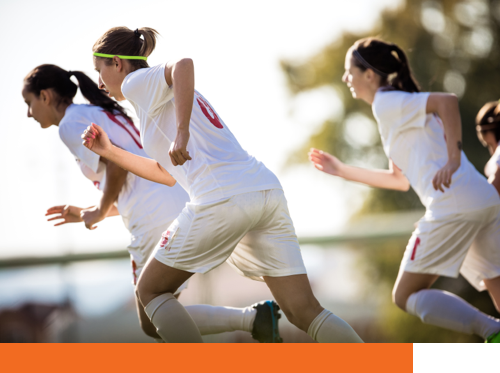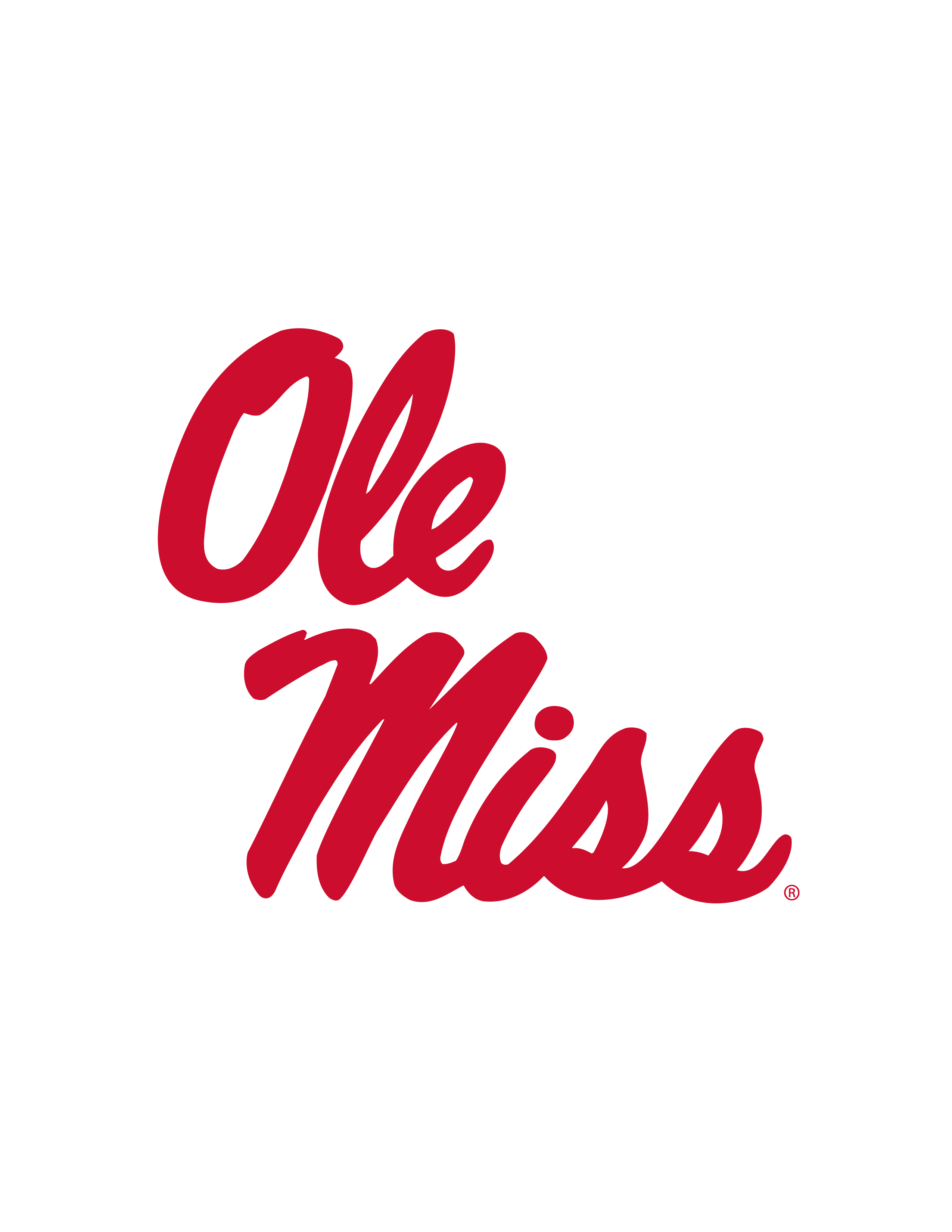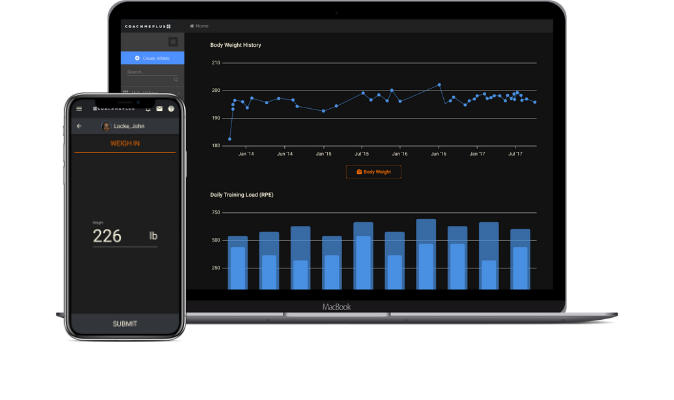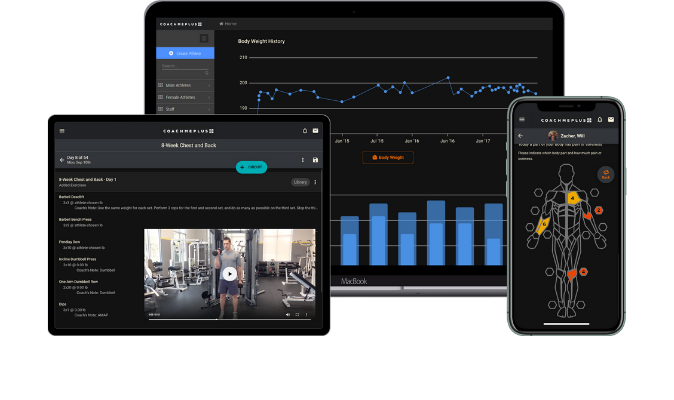MELISSA TERRY,
ASSISTANT WOMEN’S SOCCER COACH
Ole Miss Assistant Women’s Soccer Coach, Melissa Terry, has seen sports science from different perspectives, starting her career as a Strength and Conditioning coach at Florida State, then later joining the coaching ranks for the Rebels. Since her time as a player at University of Central Oklahoma, she has seen the industry take leaps and bounds in the way that data is collected and analyzed.
Terry discusses her career and how she uses analytics to keep the Rebels, who went 14-5-4 last season, in top shape.
Interview with Melissa Terry
HOW HAS COACHMEPLUS HELPED YOU GATHER AND ANALYZE THE DATA YOU COLLECT?
As a general rule of thumb, strength coaches do a really good job of gathering data, it’s just a matter of it being consistent and (organized). Even testing data, it becomes, “did I save it under ‘Fall 2015 Testing?’ or did I save it under ‘Testing Fall 2015?’” There are so many ways you can forget where you put your data in an Excel spreadsheet. To have a consistent place to put things and always having the testing dates and it is readable, understandable and simplistic is so huge for coaches. If we were in season right now, the girls would fill out a daily questionnaire. If I pull up Monday morning before practice and see the whole team color coded with different colors. It lists everyone’s name, their hydration levels, the overall mileage they’ve accumulated and how they slept. CoachMePlus allows you to use data to make an impact with your team.
Our head coach can go in and at-a-glance, for example, see that our top 6-8 players are at an eight or nine then it is super easy for us to make a decision to say, “OK we need to back off or maybe we need to hold this girl out for practice.” That is the thing that initiates us to say, “Why do you feel like an eight today?” It has been really cool for that purpose and our coaches and strength staff all have access. When you click on individuals, we have specific breakdowns for different things we want to look at. If somebody pulled their hamstring on Monday and by Thursday they are still rating it an eight or nine, we can go to the trainer and ask if she’s been doing the treatments and doing the rehab.
The biggest thing it’s done is made everyone hyper aware of how everyone’s feeling, including the athletes. They have to be in tune with how they are feeling in order to accurately show on the questionnaire how they’re doing. People have asked: “What if they say they are more sore because they just don’t feel like doing things?” We’ve found that if they don’t want to do something, there’s a reason. Maybe it is because they got in a fight with their boyfriend or pulled an all-nighter studying. There is a reason they are reporting they feel poorly. It doesn’t really matter. If we push them over the edge because they aren’t feeling well, the outcome is still the same whether we think their answer on the questionnaire is legitimate or not.
HOW DO SPORTS SCIENCE, WEARABLE TECHNOLOGY, AND QUESTIONNAIRES HELP YOU KNOW YOUR PLAYERS’ CONDITIONS DAY TO DAY?
We have had players who walk into the coaches office and say, “I feel fine,” then we show them their survey that shows their knee is at an eight. They say, “I can still play, but yes it hurts.” They still have the feeling that they don’t want the coaches to think they are pulling themselves (out of the game). We have had our trainer come into the coach’s office and say, “(The player) wanted you to know she’s not pulling herself from practice, I am pulling her from practice.”
“It is their mentality of not wanting to let coaches down or miss out on any opportunities and that comes from being competitive. There have been plenty of times where we see their responses on surveys and make decisions without calling out players.”

We can back off or format practice to give certain people extra breaks. We don’t want them to be in a position where they are giving answers they think we want to see. We feel pretty confident that the majority of players put on the questionnaires how they actually feel.
HOW DO YOUR PLAYERS ADAPT TO THE USE OF THESE SPORTS TECHNOLOGIES?
Initially they felt like it was an additional mental strain. When they started to understand that people are getting extra attention or treatment whether it be massage, chyrochamber, chiropractic, or time off (we have spent thousands on recovery systems) – they start to understand that we’re doing this so players can be more physically more prepared to play. It was definitely met with some pushback, but they understood that this type of thing is here to stay. They started to notice on YouTube highlights that the US Women’s National Team was using Polar and different articles would come out about tracking their sleep and hydration. They thought, “If it’s good enough for them, it’s good enough for me.”
HAS THE ACCESS TO DATA ALTERED IN-GAME STRATEGY?
When we first got the system we thought it would take the whole year before we would be able to make anything out of the data, but about one-third through the season when we started to realize at halftime – looking at the mileage – we could predict who we needed to give extra rest to. When we were at home, there were one or two players that we would shut down for the last five minutes of the half so they could get a 20 minute halftime and doing something to aid in their recovery before the second half. Our head coach got to the point where he could ask how certain players were doing. He might not know the specific numbers on a player but he knows that we can figure out whether we need to give that player a break.
WHEN DID YOU PERSONALLY BECOME ADEPT AT USING SPORTS SCIENCE AND WEARABLE TECHNOLOGY?
I like to think that soccer has been trying to use wearable technology for awhile. I first started using it at Florida State in a strength and conditioning capacity. We got the Polar Team 2 system and I got very familiar with that and things like training loads and creating intensities for the week leading up to the game and how to unload prior to the game and how to detect if there was something like two overtime games in a weekend – things that you can’t predict. Sometimes you end up using a player more than you wanted to. There are so many things in a game you can’t predict. You want to have a season plan and be able to make adjustments to it as the season goes along.
Because I’m kind of a science nerd, my undergrad was kinesiology and health studies and I enjoyed classes that most of my classmates really dreaded. I really loved biomechanics and kinesiology and practical application, so I got my Master’s in exercise physiology. At the time, Baylor was one of five programs in the country that had a Master’s in strength and conditioning. You could go two routes: Clinical or strength and conditioning. The clinical side would spend time in the lab while the strength and conditioning would spend time in the weight room. The S&C group would have more practical application courses like speed and agility, quickness and learning how to create and implement plans for specific types of athletes. Baylor had a high academic standards and I always kind of saw myself as a jock and I didn’t really challenge myself in high school and college. I kind of skated through.
When I got to grad school, I had never really learned how to study before but there had to spend six weeks studying for a physiology class. So getting deep into that and challenging myself and learning so much about the human body and the performance side of it was so cool. I thought: How can we use this more? I learned in grad school that there were tons of researchers willing to do research that would have application to athletes. For the most part they were using the general population, not something like a Division I soccer team. The findings could be incredibly different. So it was a combination of becoming more academic at Baylor and being pushed by my mentors to try new things. Then when I got to Florida State, the head coach there had been using the Polar Team 1 system, but they didn’t have much of an idea what to do with the data. I said: “I know lots of things we can do with this data.” I took it on as my pet project to organize things. Then when we got the Team 2 system, things were far more advanced. There was Bluetooth, so you got the data live and we were able to apply it within a session, which was big time because we were able to apply it within a game or practice.
HOW DO YOU DECIDE WHAT SPORTS TECHNOLOGY IS BEST FOR YOUR TEAM?

Because of my experience with Polar and seeing top ranked teams using Polar – it’s the company that the US Women’s National Team and Men’s National Team uses and a lot of international teams use – I knew I wanted to go with them. I met up with them at a coach’s convention and they said, “We’re releasing a GPS/heart rate system together.” It’s the only system that has heart rate and GPS together. I had done research by going to company websites and speaking with people from those companies. I found the Polar system is 100 hz (frequency), so you can see where it would be effective for soccer. It is not a sport that has athletes running specific routes like football. Everything is free motion and reactive. It is hard to predict where somebody is going to be moving. More signals mean more accurate data when it comes to direction and duration. I was sold on that. Plus the unit is only about a 1.5×3 inches. Players snap it into the chest strap and don’t really notice it. So within that unit it has the GPS, 360 degree gyroscope, accelerometer and Bluetooth heart rate.
It is pretty impressive. I was blown away by, not only the data that it provides but the manner in which they have been able to visualize it. You bring out an iPad out and each person that’s wearing a unit has a box and it’s very simple. Even if you don’t have someone like me that understands what spending 90 minutes at your heart rate max means, it is color coded and they kind of make it idiot proof. CoachMePlus integrates with all of the best sports science technology.
“The visualizations they use are very simplistic…. CoachMePlus has made it really easy to import the Polar data in and they build out the graphs and visualizations however we want.”




